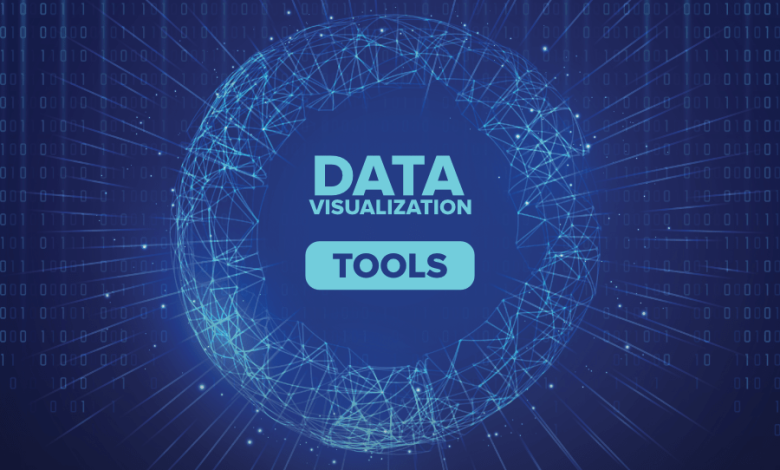TOP 8 DATA VISUALISATION TOOLS FOR 2021

Data visualisation is representing data in a more efficient and understandable manner. It allocates visual elements to the written information. These elements include graphs, maps, charts, diagrams, schematics etc. It enables the presentation of vast data in a concise manner. Such visualisation of data plays an elemental role in a range of sectors. These sectors include the vital Education sector for imbibing conceptual learning, corporate world for explaining the overall dynamics, governmental policy and decision making, logistics and transportation etc.
This article provides an insight into some of the most popular data visualisation tools in 2021 for performing data visualisation tasks efficiently and smoothly and can get data science assignment help. These top rated tools are quite popular among the masses across the globe.
DATA VISUALISATION TOOLS
1. TABLEAU
Tableau is a fast growing data visualisation tool in the current scenario. It is strong and powerful software that converts data into visual objects without much effort. This visually processed data can be read and interpreted easily by individuals from technical as well as non technical backgrounds. Some of the most vibrant features of tableau include effortless sharing of processed data, flexible implementation of layouts and visual objects on the data through Tableau dashboards, use of complex visual objects such as motion charts, Boxplot and maps. Along with this dynamic set of features, Tableau also provides a stealthy framework of security that keeps user data safe and secure.
2. GOOGLE CHARTS
Google charts provide an opportunity to enhance the visual appearance of a website by offering a diverse set of ready to use charts and other similar visual objects for representing information in a concise manner. These features can be availed using javascript. Some of its highlighting features are dynamic data, a range of unique chart outlines, dynamic dashboard embedded with vibrant features along with free to use objects.
3. DATAWRAPPER
Datawrapper is originally designed to meet the requirements of journalists and reporters who publish researched articles with data statistics. One remarkable feature of Datawrapper is that it beautifies the visually accommodated data and makes it look pleasantly presentable and interactive. It offers creation of interactive and real time maps, charts and tables. These elements can be beautifully designed to please the reader’s eyes. Its reviews are highly impressive and engaging. Datawrapper is a top rated data visualisation tool across the rating platforms.
4. ZOHO ANALYTICS
Zoho analytics facilitates analysis and processing of complex data quite easily and efficiently. It provides tools for organisation of data in effective visual representation objects. It has very powerful data connectors that facilitate operating on the data. Zoho analytics eases the structuring, modification and summarisation of data. It is also embedded with a dynamic security feature that keeps the user information secure. Apart from this it also offers mobility, presentation of data in storytelling mode, and integration of data for the purpose of analysis.
5. MICROSOFT POWER BI
Microsoft’s Power BI comes with a great range of visually plausible data holding structures. It is known for its remarkably well developed data visualisation system. It offers a wide range of visual objects that can be inserted in to supplement information. These include stacked charts and graphs, treemaps, ribbon and funnel charts. It also accepts data from a range of sources including PDFs, excel sheets, SQL databases. Like other tools it also has a vibrant dashboard endowed with attractive features.
6. LOOKER
Looker is an easy to use and efficient data visualisation business Intel tool. It is known for its user-friendly nature due to the ease that it offers in structuring and modifying interactive data. Looker allows the user to instantly access the dashboard through the browser, without dependence on software. Its independent nature (from software) helps in standing out from other similar visualisation tools. Other features are very similar to the above mentioned tools, like interactive structuring of data, creative set of charts, graphs tables etc in a secure environment.
7. INFOGRAM
Infogram, like Looker, is a web based data visualisation tool. It allows users to access and share data from other users. Infogram facilitates creation of dynamic real time graphs, maps, charts and diagrams through a range of icons and graphics that it offers. It allows users to access all these features through an effortless drag and drop method. This makes it highly easy to use and efficient to work with.
8. QLIK SENSE
Qlik sense is a renowned data visualisation tool. It allows users to create a visual data module sensitive to user curiosity. This interactive database is highly flexible and adapts to the modifications quickly. Qlik is a user-friendly tool as it offers freedom from scripts and complicated modelling. It follows the simple procedure of drag and drop for executing tasks. Qlik also offers the efficient collaboration between users, mobility and presentation of data in story telling mode.
CONCLUSION
These are the top 8 most popular data visualisation tools for 2021. These tools offer a dynamic set of data visualisation features combined with robust security framework and easy to use attributes. Using the above mentioned tools one can create a vibrant and impactful report. Such visualisation also facilitates a synopsis and interpretation of data in the most optimal manner. In the current scenario of fast moving lives, these tools facilitate quicker and comprehensive data visualisation. One can choose from amongst the above mentioned tools for data visualisation the tool that suits their requirements and based on their technical or non technical working skills.
Read More: How Virtual Data Rooms Revolutionized The Businesses From Different Industries?



